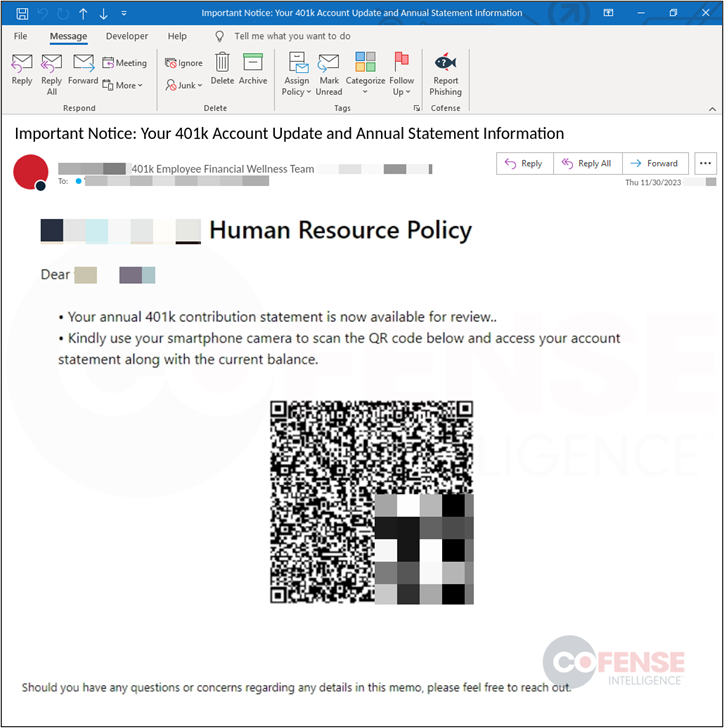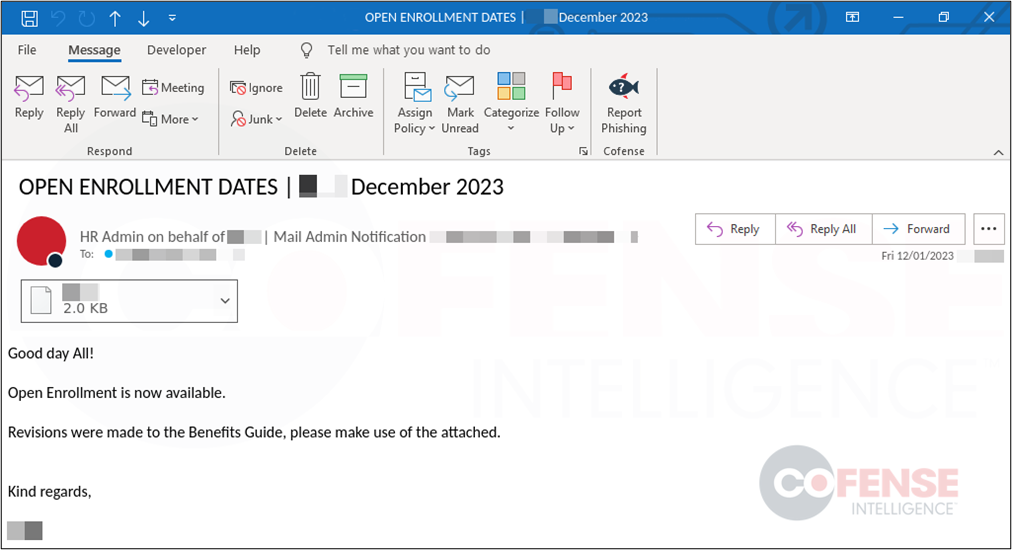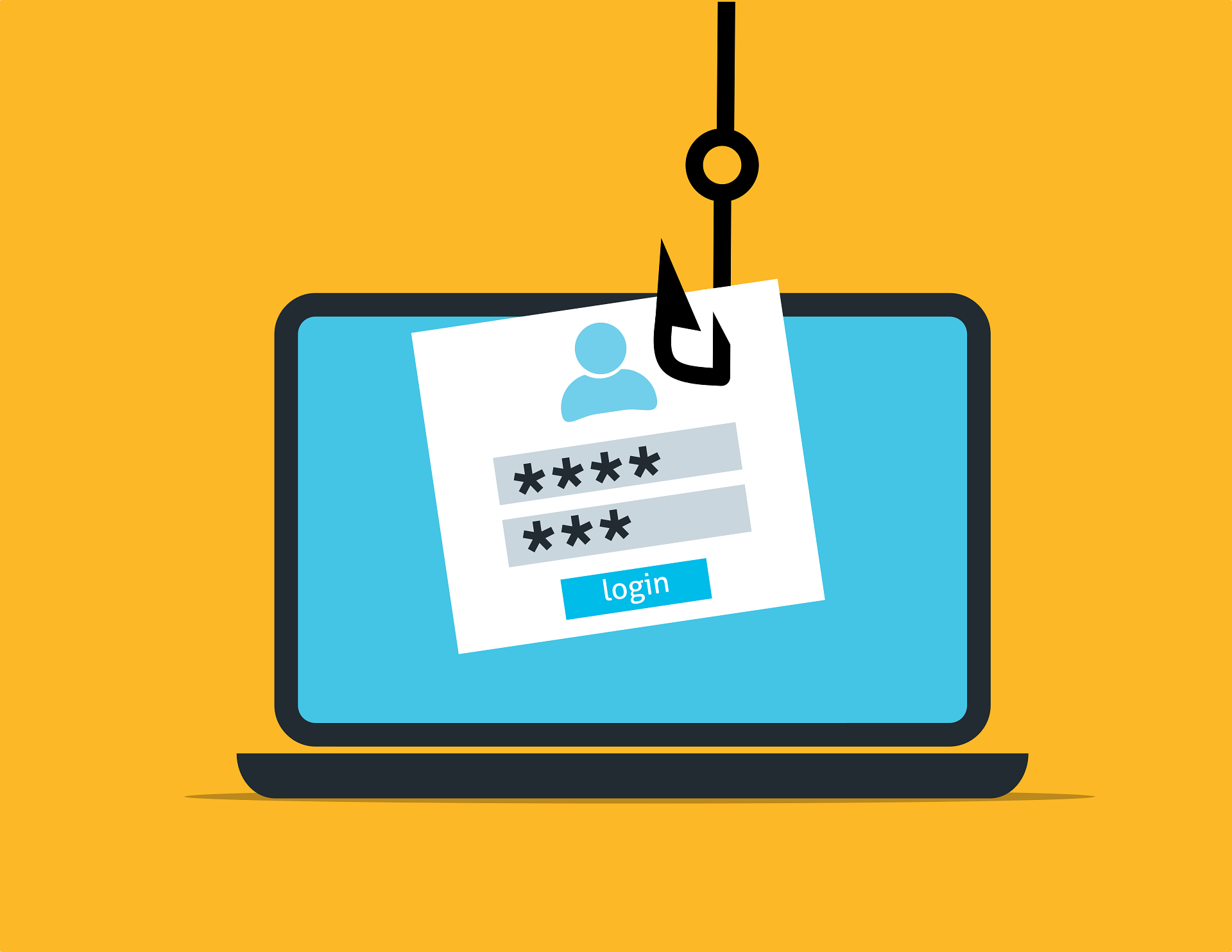Imagine you’re sifting through your inbox on a busy Monday morning. Amidst the usual mix of internal communications and project updates, you spot an email from your Human Resources department about your 401(k) plan. It mentions critical updates and requests your immediate attention. Before you click on any links or respond, pause and consider: Could this be one of the sophisticated phishing scams that are becoming increasingly common?
Phishing attacks are not just random, poorly written emails from unknown sources. They can be cleverly disguised, appearing to come from within your own organization, discussing topics you care about – your retirement plan, salary adjustments, or even a potential employee of the year award. These emails might even contain QR codes that seem convenient but are actually gateways to fake websites designed to steal your credentials. As you read this, think about the last time you received a seemingly important email related to HR matters. Did you scrutinize it, or did you click through without a second thought?
Threat actors have escalated their tactics by leveraging topics such as personal pension accounts (commonly known as 401(k) plans in the United States), salary modifications, and performance evaluations to pilfer valuable employee credentials. This alarming trend has prompted a warning from the email security experts at Cofense, who emphasize that these cyberattacks are on the rise, posing significant challenges even for organizations with robust email security measures in place.
The 401(k) retirement savings plan is a widely adopted financial instrument in the U.S., offering employees a tax-advantaged avenue to save for their future, often accompanied by employer contributions. Capitalizing on the popularity of this financial tool, cybercriminals have begun orchestrating phishing campaigns that masquerade as 401(k) notifications originating from a target’s own Human Resources department. These fraudulent messages falsely claim to contain critical updates or information regarding increased contributions to the retirement plan.
Cofense has observed a concerning trend throughout the past year involving the incorporation of QR codes into these deceptive emails. These codes redirect unsuspecting recipients to counterfeit login pages meticulously crafted to harvest login credentials, amplifying the threat posed by these phishing campaigns. Additionally, as the year progresses, threat actors shift their tactics, deploying alternative bait strategies that include open enrollment announcements, surveys, and communications concerning salary restructuring.

Open enrollment is a specific timeframe, often coinciding with the conclusion of the calendar year, during which employees can enroll in essential programs like health insurance or retirement plans. The urgency associated with these messages stems from the fact that failure to enroll before the deadline may result in the loss of benefits eligibility until the next enrollment period.
Furthermore, cybercriminals increasingly exploit the year-end context by employing lures related to compensation adjustments, particularly bonuses and salary increases—topics that naturally garner attention and concern among employees during this period.

Lastly, Cofense highlights the emergence of deceptive employee satisfaction surveys and assessment reports sent from forged Human Resource departments. In a particularly illustrative example, phishing emails adopt the guise of an “employee of the year award” theme, enticing recipients to open performance reports under the pretense of review and signature.
As these cyber threats continue to evolve and grow in sophistication, organizations and their employees must remain vigilant and informed to mitigate the risks associated with these deceptive tactics. The rise in sophisticated cyberattacks, as highlighted by Cofense, requires more than just awareness – it demands action. Here are steps you and your organization can take to safeguard against these deceptive tactics:
- Verify Before You Click: Always verify the authenticity of emails requesting sensitive information, especially those related to financial matters like 401(k) plans. If in doubt, directly contact your HR department through known, official channels.
- Educate and Inform: Regularly conduct cybersecurity awareness training. Ensure that all employees are aware of the latest phishing tactics and know how to identify suspicious emails.
- Implement Robust Security Measures: Organizations should enhance their email security protocols and consider advanced threat protection solutions that can identify and block sophisticated phishing attempts.
- Report Suspicious Activities: Encourage a culture where employees feel comfortable reporting suspicious emails. The faster a potential threat is identified, the quicker it can be neutralized.
- Stay Updated: Cyber threats evolve rapidly. Keep yourself informed about the latest phishing trends and cybersecurity best practices.
About Purple Shield Security
Purple Shield Security is not your typical cybersecurity consulting firm. We are the guardians of your digital realm, committed to protecting your business from the constantly evolving landscape of cyber threats. With a dedicated team of passionate security professionals by your side, we go above and beyond mere data and system protection – we provide you with peace of mind. Our comprehensive range of services includes Managed Cybersecurity Services, Security Assessments, Penetration Testing, Incident Response, and more. By harnessing cutting-edge solutions and leveraging our expertise, we empower you to fortify your web applications and minimize vulnerability to attacks.
Don’t wait to secure your business. Get in touch with us today and discover how Purple Shield Security can revolutionize your cybersecurity defenses.
#cybersecuritynews #securitynews #hacking #datasecurity #cyberprotection #phishing #emailphishing #emailsecurity

